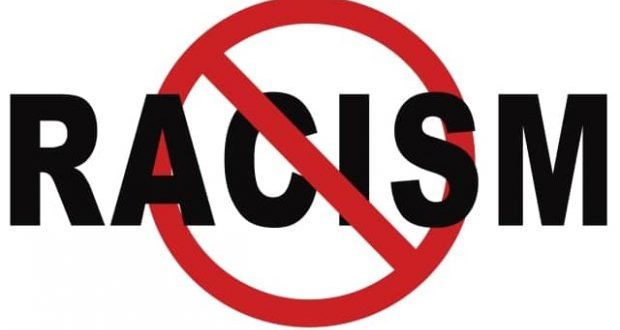What Parents Need To Know About Racism And Implicit Bias
As parents, we naturally want to protect our children in addition to providing them with the means and blueprint for a better life. Those parents in racialized and marginalized communities feel an even more urgent need to do all in their power both to protect and equip their children to defend themselves.
This is particularly the case in light of the recent waves of killings attributed to racism. But racism is even more sinister than at times acknowledged. This is why young people must have a good understanding of what racism is and how endemic it is within America and other western nations.
Racism and implicit bias are, therefore, important topics parents need to explain to their children.
Equipped with this knowledge, young people will be able to unmask and replace racism and implicit bias. By exposing racism and implicit bias, young people will be able to minimize or nullify the damaging effects of these practices.
What are the Different Forms of Racism?
- Personal or individual
- Societal, frequently associated with cultural and ideological racism
- Systemic, which often referred to as institutional and structural racism (Henry, Tator, Mattis, &Rees 1998; Shockness, 2017).
The fact remains there are several forms and explanations for racism. In many instances, there’s an overlapping of different forms (Shockness, 2017). What is important is understanding that while there isn’t always a clear-cut identification of a particular form of racism, there’s a need for recognizing the various strategies that are used in racism.
While personal or individual racism is based on the idea someone doesn’t like another because of their skin color, this isn’t the most common form of racism in our society today. There is societal racism where many graphic or textual images in media depict Blacks in stereotypical terms. Words used to describe Blacks often carry stereotypical overtones.
Even portrayals of Blacks in films and other media often show them in menial or subservient roles, and the first characters to be killed off in many movies are Blacks.
Images of Blacks who should be memorialized are excluded or downplayed. At the same time, statues of Whites who have been oppressive to Blacks and other racial minorities have been held in high regard and venerated. In short, Black bodies in media are often devalued.
Systemic racism covers the practices and policies that are entrencahed in many institutions and organizations. Systems are kept in place that prevents certain racial groups from holding certain positions and limit the social mobility of members of racialized groups who are aptly qualified to hold these positions. In short, systemic racism prevents equity for some people because of unfair systems.
Being able to identify racism is essential for young people, for as pointed out if young people think they live in a meritocracy where everyone has a fair chance, and they are disadvantaged within society on the basis of economics, race, or ethnicity, they can develop self-doubt and low esteem (Anderson, July 27, 2017).
This will come about as they see others belonging to their same race and ethnicity, also failing as they do. These young people could then come to a conclusion there is something innately inferior with them when compared to Whites who appear to be winning.
By acknowledging they live in an unfair society, Black and racialized young people could be motivated to ask questions as to why this system remains in place, and what they can do about changing it. The result can, therefore, be better when these young people can recognize the racism around them and can take measures to minimize the effects on their lives.
Rather than decide not to try any longer because they cannot accomplish something, young Blacks and other racialized groups could decide to really challenge the racist practices that try to hold them down (Shockness, 2019). In so doing, they can excel beyond their wildest dreams.
Implicit bias can be seen as nurturing racism. Implicit bias is the taken-for-granted belief that stereotypes define reality. Providing a definition of implicit bias, one source notes that it is “the attitudes or stereotypes that affect our understanding, actions, and decisions in an unconscious manner (Staats, Capatosto, Wright & Jackson, 2016, p. 14).
This is not to say that there is no explicit bias associated with racism, where some individuals consciously hold negative views about certain groups (Perception Institute, 2019). In these instances of explicit bias, some individuals see others as a threat to them and consciously set out to harm these groups. Implicit bias is, therefore, seen as stereotypes that are nurtured through negative images, graphics, and textual in our society.
But implicit bias is also noted in the way we speak about others, and the jokes we make about groups of people. These apparently innocent statements and jokes are really having a tremendously negative impact on the unconscious views we hold about people and about ourselves.
As noted, if Blacks were to internalize these negative views of themselves, even these stereotypical views about their race, they would have succeeded in oppressing themselves as efficiently as if they were oppressed by others (GIFT, 2012).
Having explained the various forms of racism, how implicit bias continues to nurture racism, and the negative impact racism has on young people, parents must think of ways to start nurturing their children from a young age to immunize them against the negative impact of racism.
One of the measures includes speaking to your children about racism, about the threat that is often fostered in stereotypes about Blacks, particularly about Black men and boys (Perception Institute, 2014).
One way of dealing with this implicit bias about Blacks is for greater involvement of Blacks in groups, which promotes better understanding between people of different races. Having your children belong to organizations where there are other races, including Whites, helps to remove ignorance about Blacks, but also about other groups.
Parents can discourage ethnic, racial jokes about other groups and peoples, and be good examples to your children. When these jokes are made, parents and young people can challenge the speaker, for this could discourage this practice.
Young people must be encouraged to be more accepting of difference, and to reject bullying, particularly when one person believes that he or she has a greater privilege and so is entitled to treat another person as an inferior.
Young people should be taught to be leaders, not followers. By teaching them to stand up for what is right, as parents, you will be helping to build good character in your children. Build self-esteem in your children by reading to them, or encouraging them to read positive books with Black characters.
Help build self- esteem in your children by treating them with respect. Even when your children do wrong or have made a mistake, you must correct them. However, the correction does not need to be abusive, but rather rehabilitative with a touch of compassion (Shockness, 2017; Shockness, 2019). Parents must help their children to respect themselves and not see themselves as useless.
As parents wanting to speak to your children about racism, you would find that there are many creative ways to help your children see not only the ignorance but the danger in racism and help them build self-esteem. By showing them you are working to make changes to the systemic racism that exists in society, you will also be giving your child hope that one day, things would change.
You would also be providing them with examples of how to bring about change without violence. In the meantime, your young people can be motivated to be the best they can ever be, knowing their excellence would be recognized.
The book Respect is Only Human A Response to Disrespect and Implicit Bias is a great resource that can make an impact on the life of young people.
References
Anderson, M. D. (July 27, 2017. Why the Myth of Meritocracy hurts kids of color. The Atlantic Post. Retrieved from https://www.theatlantic.com/education/archive/2017/07/internalizing-the-myth-of-meritocracy/535035/
Calgary Anti-Racism Education (n.d.) Forms of Racism. Retrieved from http://www.aclrc.com/forms-of-racism
GrassrootsFundraising.org (2012). The Four I’s of Oppression. Retrieved from http://www.grassrootsfundraising.org/wp-content/uploads/2012/10/THE-FOUR-IS-OF-OPPRESSION-1.pdf
Henry, F. Tator, C., Mattis, W. & Rees, T. (1998). The Color of Democracy: Racism in Canadian Society. Toronto: Nelson Canada.
Perception Institute (October 17, 2019). Explicit Bias, Retrieved from https://perception.org/research/explicit-bias/
Perception Institute (2014). Transforming perception: Black men and boys. Retrieved from http://perception.org/wp-content/uploads/2014/11/Transforming-Perception.pdf
Shockness, I. (2017). Welcoming Responsibilities: 30 Ways for Older Teens and Young Adults to Handle Responsibilities. Volume 2: Successful Youth Living Series. Vanquest Publishing. Available on Amazon at https://www.amazon.com/dp/1775009440
Shockness, I. (2019). Respect is Only Human: A Response to Disrespect and Implicit Bias. Volume 6” Successful Youth Living Series. Vanquest Publishing. Available on Amazon at https://www.amazon.com/dp/1775009483
Staats, C., Capatosto, K., Wright, R. A. & Jackson, V. W. (2016). State of the Science: Implicit Bias Review 2016. Columbus, OH: The Ohio State University, Kirwan Institute for the Study of Race and Ethnicity, 2016), 1-88.






